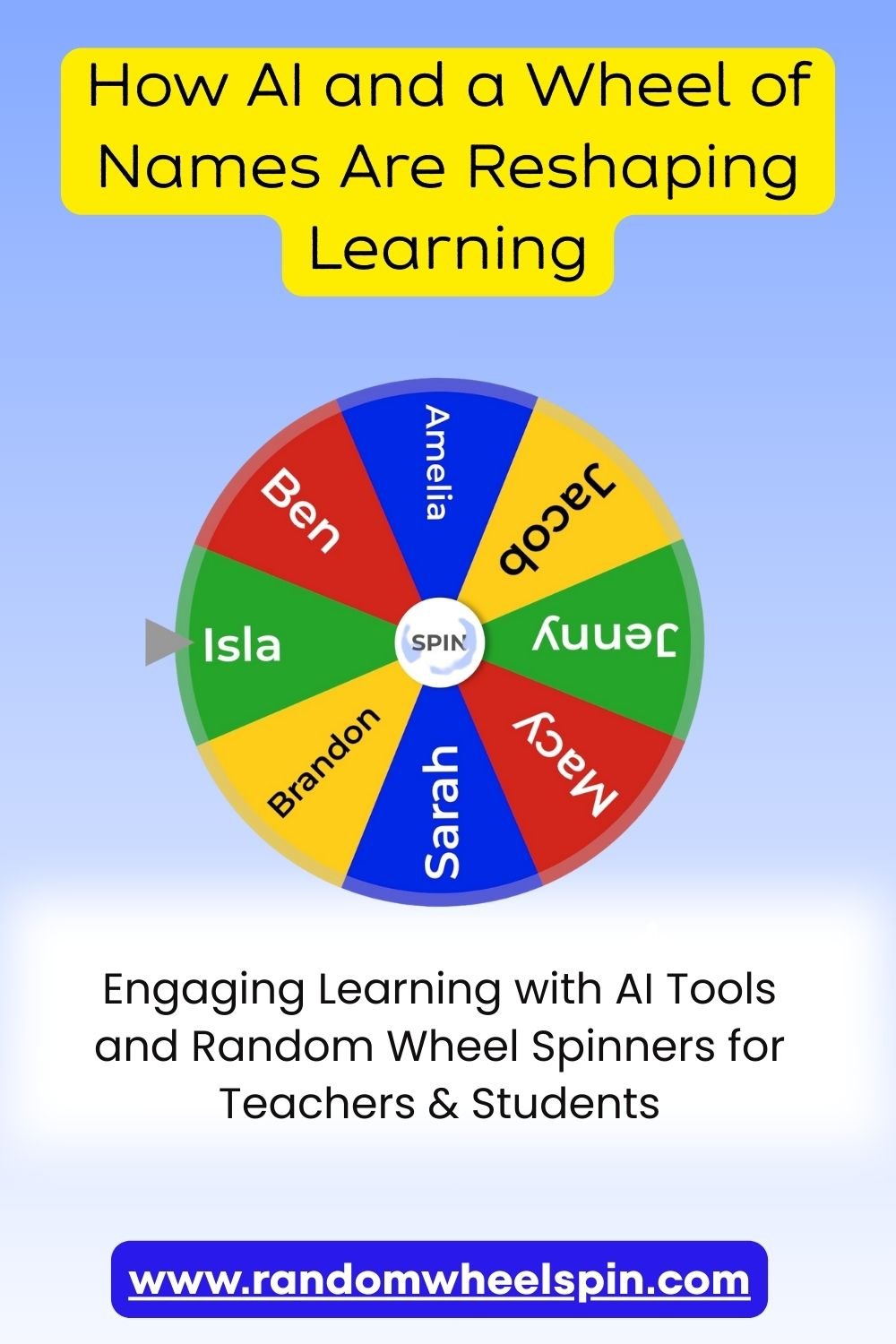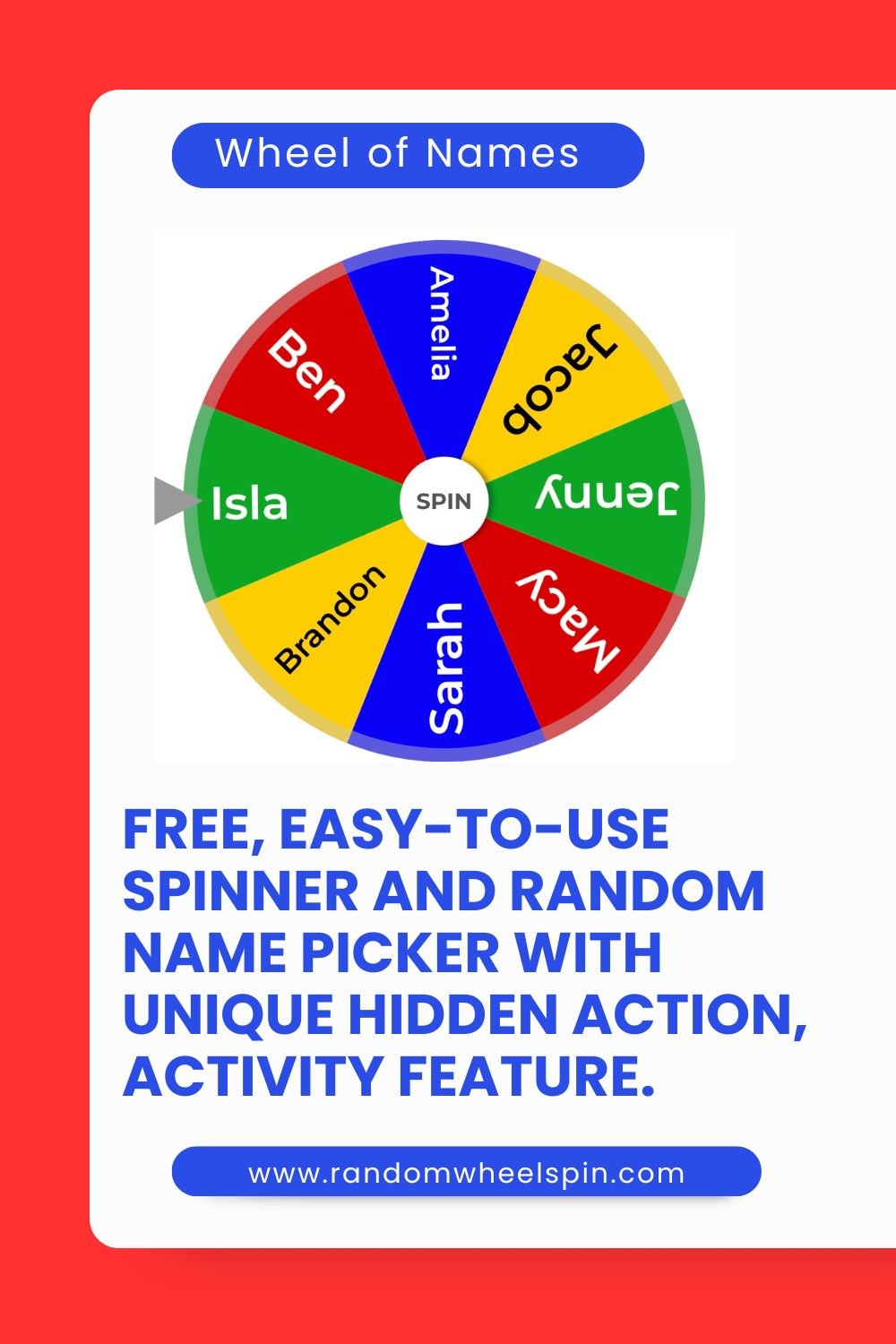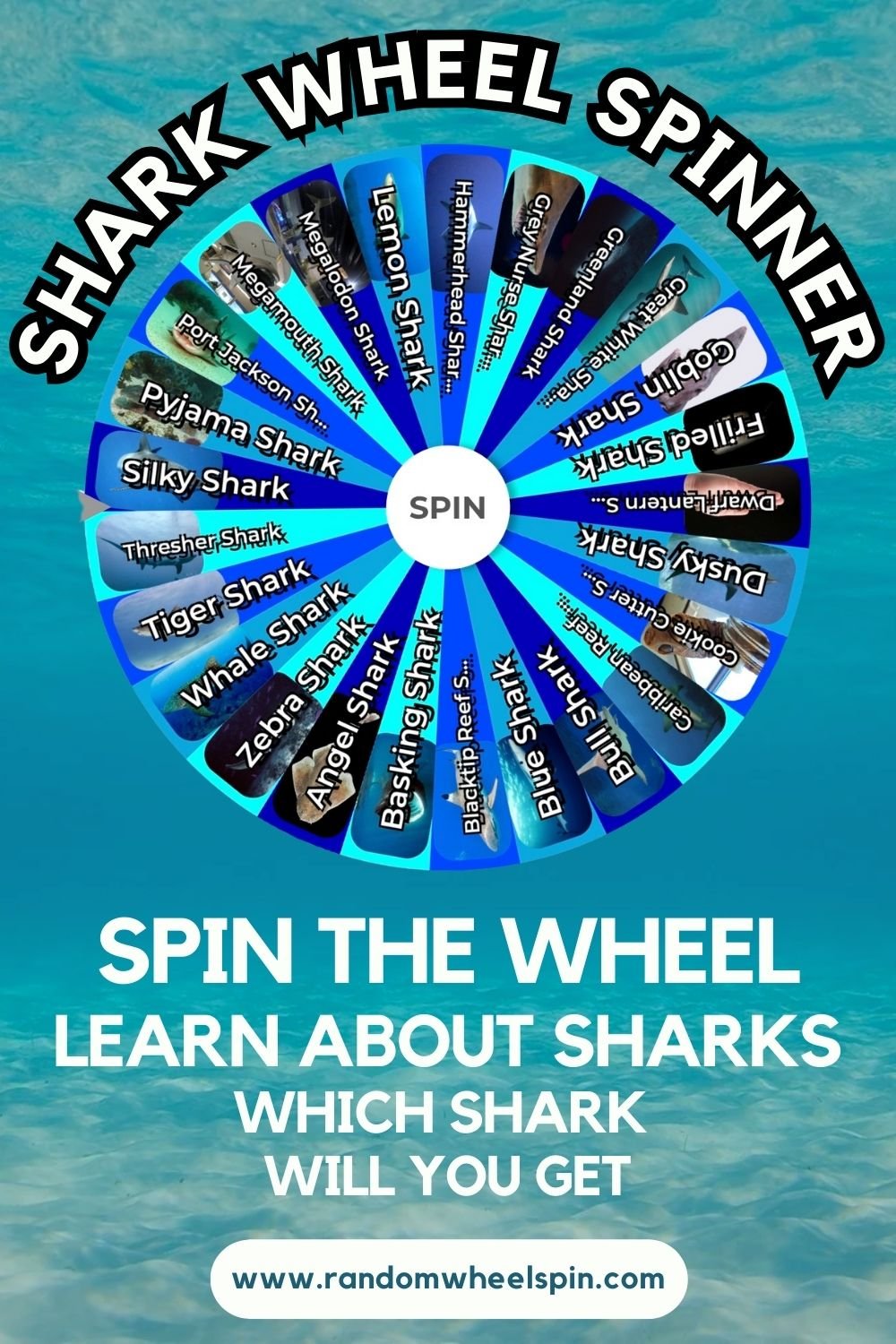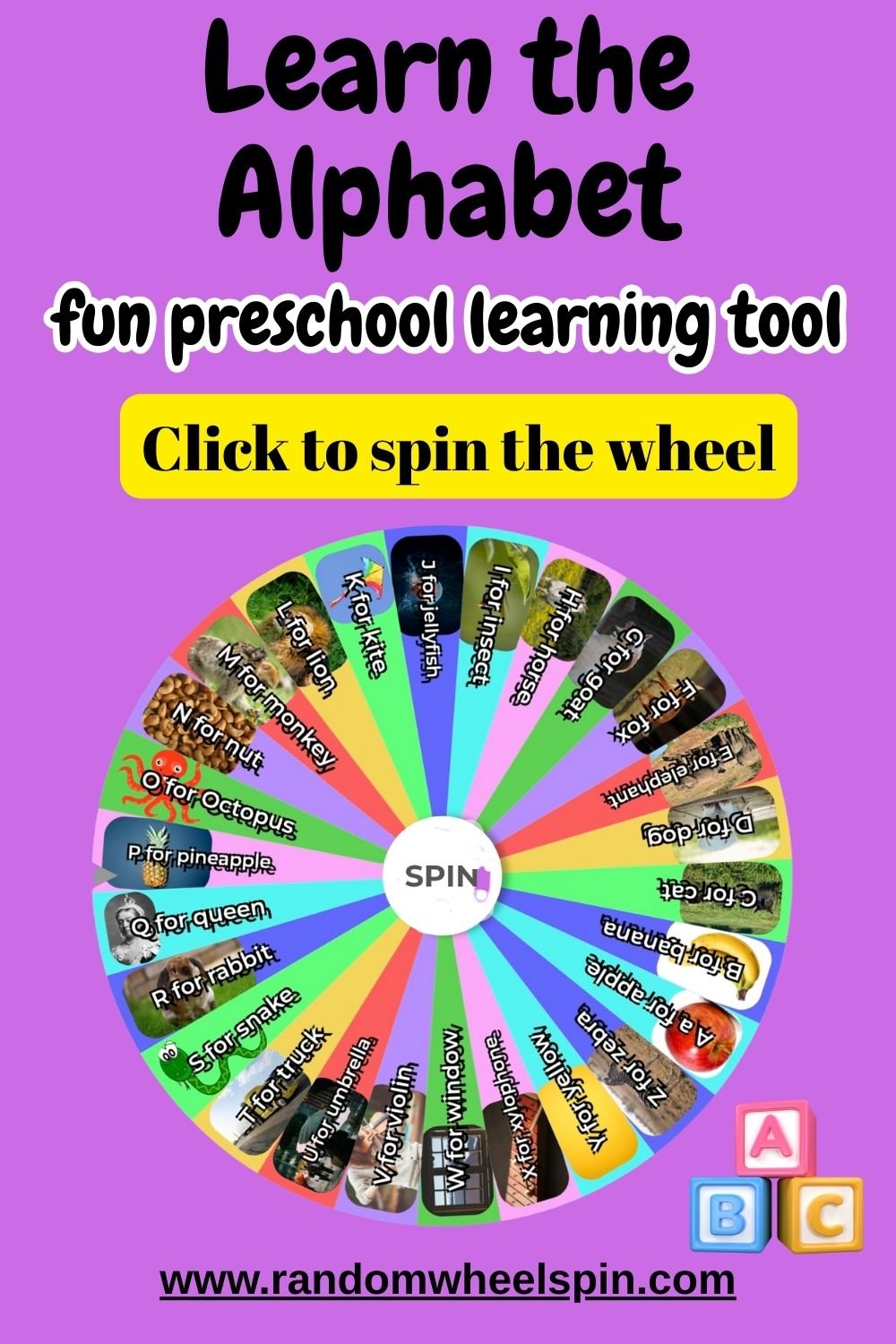
AI in Education: Personalization Meets Precision
Imagine this: a kindergarten classroom noisy with tiny voices, a high school where students juggle exams and social pressures, or a university lecture hall filled with students with laptops and coffee. In each of these spaces, education is shifting. Chalkboards are giving way to screens, static lesson plans to adaptive technology, and most exciting of all, traditional teaching methods are being reimagined through the playful, unpredictable spark of gamification.
Artificial intelligence (AI) is at the heart of this shift. AI is not trying to replace existing systems. Instead it works best when paired with other tools that already aid learning. This is where a wheel of names spinner comes in. A wheel of names is a random name picker where you enter names and/or images onto a wheel, the wheel is spun and one of those entries is selected at random, exactly like throwing a dice. Instead of making decisions the usual way, the wheel of names spinner brings an element of fairness and excitement. When you spin the wheel of names each entry on the picker wheel can also include optional hidden information. This might be an activity question, fact, task, or prompt that only appears once the wheel lands on that choice.

Figure 1. Example of a Wheel of Names spinner.
AI has transformed learning by making it personal. Instead of every child moving at the same pace, AI tools can adapt in real time. A reading app can slow down for one child while fast-tracking another. A math platform can generate extra practice problems for fractions while breezing past multiplication tables a student has already mastered. At higher levels, AI-driven software can recommend articles, generate practice case studies, or map out personalized study plans for stressed-out university students.
The biggest win? Nobody falls through the cracks. Teachers gain insights about who needs extra support, and students experience learning as something tailored to them, not forced upon them.
But personalization alone isn’t enough. Humans crave surprise. And that’s where the humble wheel spinner adds a missing ingredient.
The Classic Wheel of Names Spinner: Bringing Surprise Into Structure
Teachers have used virtual wheel spinners for years as a low-tech way to make learning feel like a game. Spin the wheel, and suddenly the class is holding its breath, waiting to see who presents first, what topic gets picked, or which problem they’ll solve together.
That unpredictability does something AI alone can’t: it creates shared excitement. It adds anticipation and students are motivated and engaged when they see the wheel spin waiting to see what the result will be.
But one of these platforms goes even further.
Random Wheel Spin: Beyond the Spin
Most spinners stop at the “what.” Random Wheel Spin is unique and takes it to the “what’s next.” Behind each entry, educators can hide activities, prompts, questions, or multimedia reveals. The wheel doesn’t just land on “Student A” or “Topic B”—it unveils a second layer of content that transforms a spin into a two-step learning moment. This is the “hidden activity, action, question, answer or facts” feature offered, which adds hidden information “underneath” each of the wheel entries.
This is a game-changer for AI-driven classrooms. Imagine an AI platform identifying that a group of students needs practice with geometry. The teacher loads review questions into the wheel. The wheel of names doesn’t just pick which group answers; it reveals the actual problem, maybe even accompanied by a diagram or audio explanation. Suddenly, the lesson feels both personalized (thanks to AI’s insights) and playful (thanks to the wheel’s reveal).
It’s structure wrapped in surprise. Students stay engaged because they can’t predict what’s coming next, but they also stay focused because the wheel connects directly to the lesson material.
Supporting Different Learners
What makes the wheel especially powerful is its inclusivity.
For visual learners: teachers can load images into the reveals, turning a simple spin into a flashcard moment.
For auditory learners: the wheel can “speak” the result and hidden activity or action, offering accessibility for students who process best by hearing.
For neuro-diverse students: the spinner can be a calming, focusing presence. It’s almost like a digital fidget spinner—except tied to learning goals. For example, one of the ready-made wheels is a “Shark Facts” wheel for autistic learners who love marine life. Each spin shared a hidden shark fact, making science lessons both soothing and exciting.
AI might adapt to learning styles mathematically, but the wheel adds a sensory, emotional layer that algorithms alone can’t replicate.

Figure 2. Example of the Shark Facts Wheel. This is great for neuro-diverse users with a special interest. The hidden information contains facts about each shark species!
Integrations and Templates: Practical Aid for Teachers
One reason educators love a wheel of names is how seamlessly it fits into their workflows. It integrates with Excel, CSV, and Google Sheets, so teachers can quickly upload class lists, quiz questions, or lesson prompts without endless copy-paste work.
On top of that, it comes with ready-made templates in categories like “Classroom” and “Learning.” Teachers pressed for time (and what teacher isn’t?) can pull from quizzes, review games, or participation wheels already designed with education in mind.
Three Ways a Wheel Shines
To see why this matters, let’s break it down:
Classroom Management
Teachers can use the wheel to pick students fairly, assign roles, or preload lesson activities. The hidden reveal feature means a spin can hand out both the “who” and the “what,” cutting down on wasted time.
Learning Management
While it’s not a full LMS, the wheel of names acts as a micro-delivery tool for learning content. Think of it as a bridge—AI curates what needs to be learned, the wheel gamifies how it’s delivered.
Communication Management
The wheel can spark communication in group discussions, meetings, or even student feedback sessions. A hidden prompt might launch a debate question or surface a pre-submitted idea, getting conversations flowing without putting individuals on the spot.
Kindergarten Through University: Different Ages, Same Excitement
In kindergarten, a spin might reveal the letter of the day such as in an Alphabet Letter Wheel or a hidden picture clue for storytime. AI ensures the activity fits the child’s learning stage, while the wheel makes it magical.

Figure 3. Example of an Alphabet Wheel for kindergarten children.
In elementary school, students could spin for math problems, science experiments, or history prompts. AI tracks progress; the wheel keeps energy high.
In high school, a spin might assign debate roles, essay prompts, or hidden challenges. It breaks the monotony of lecture-heavy days.
In university, the wheel becomes a serious engagement tool—choosing case studies, assigning group projects, or surfacing hidden prompts for seminar debates. AI ensures relevance; the wheel adds suspense.
Why the Combination Works
Education is not just about information—it’s about experience. AI personalizes the journey, but the wheel spinner injects unpredictability, inclusivity, and joy. Together, they create classrooms where students not only learn, but want to learn.
It’s the balance that matters. One without the other feels incomplete. AI without surprise risks becoming sterile. A spinner without structure risks becoming a toy. But put them together, and you get something powerful: precision and play, data and delight.
Final Thoughts
Whether it’s a kindergartner laughing at a surprise story prompt or a university student nervously awaiting which case study the wheel unveils, the magic lies in engagement. AI may be the brain of modern education, but the wheel of names is the heartbeat.
It reminds us that learning is not only about answers—it’s about the thrill of discovery, the spark of curiosity, and the joy of not quite knowing what’s coming next.
 EN
EN
 Español
Español
